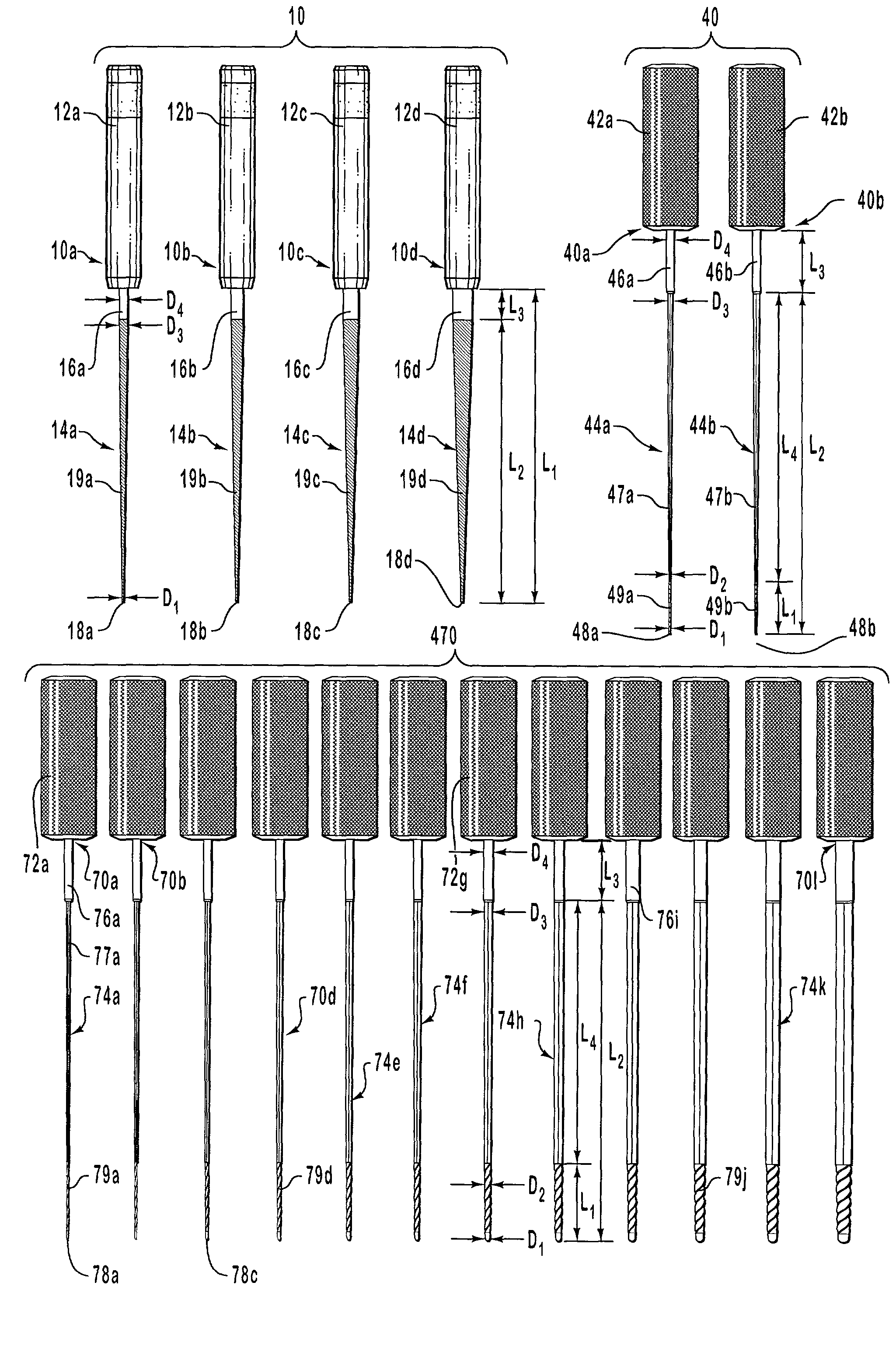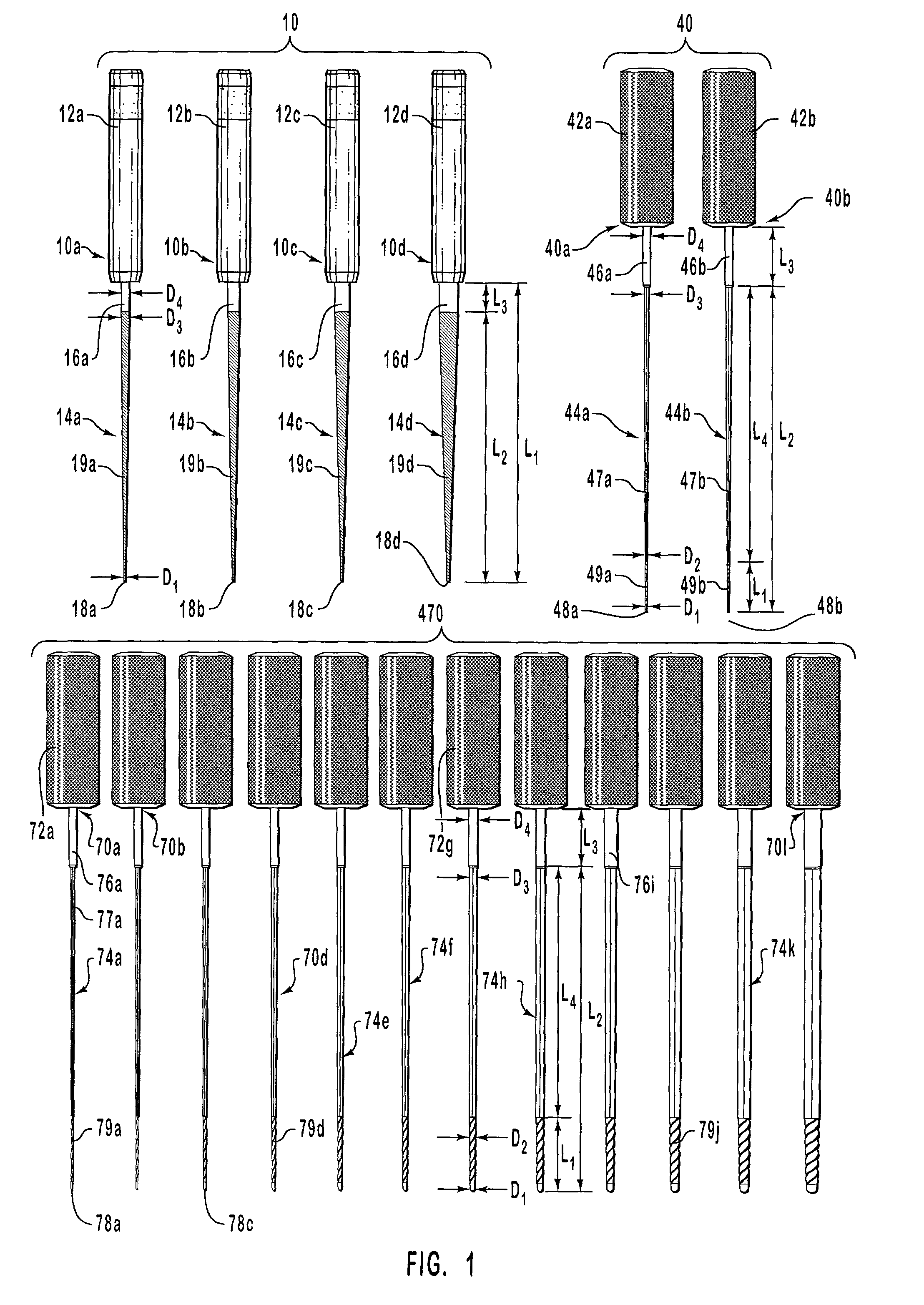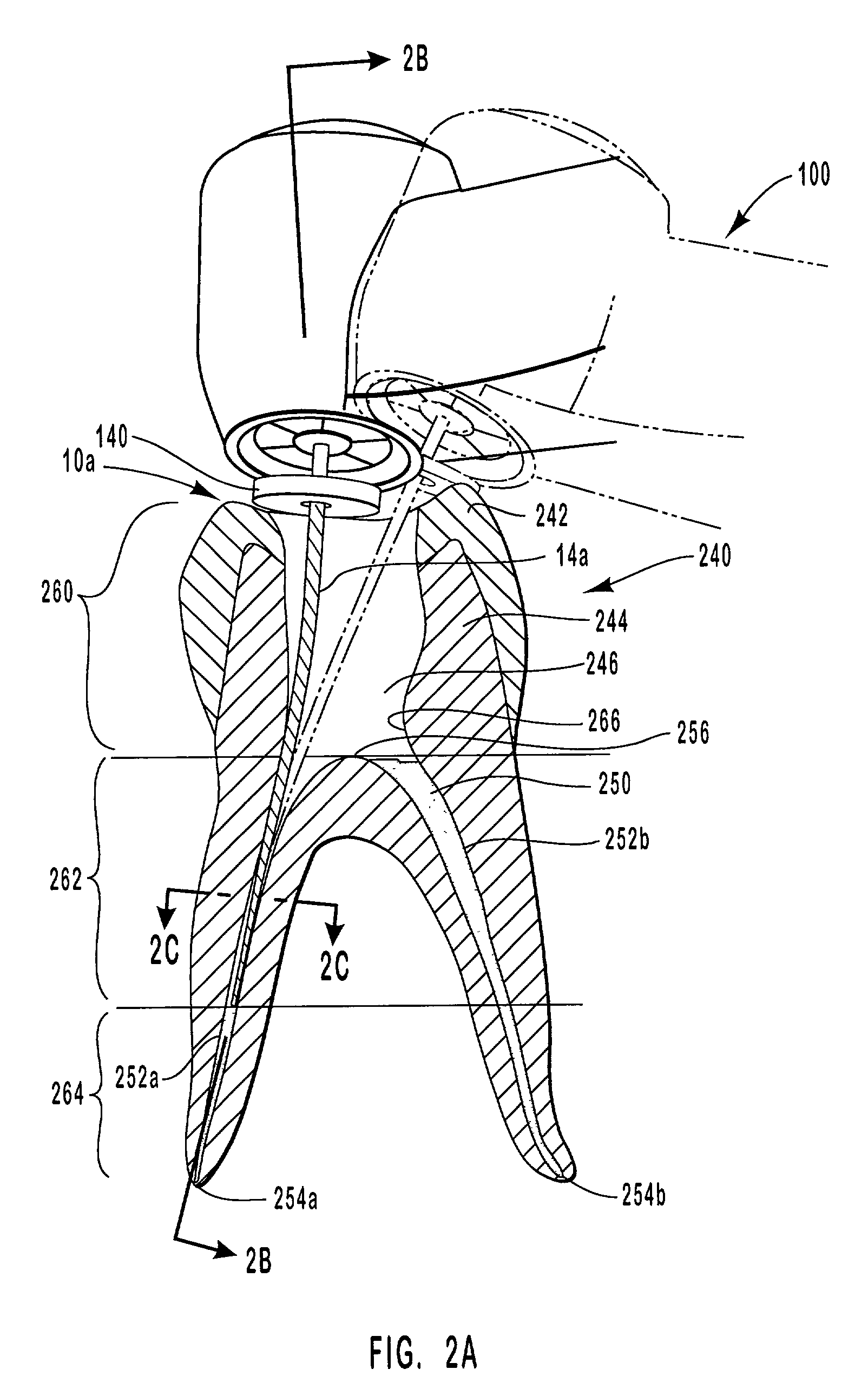As a result, it becomes increasingly difficult for the files to adjust to or to follow the contours of the perimeter surfaces of the root canal.
This reduced flexibility also increases the likelihood that the files will fail to contact some portions while removing too much of the surrounding
dentin in some areas through excessive abrasion and resulting in overthinning of the walls.
Not only is the completeness effected by the use of a set of files wherein each file is more rigid than the preceding file but the ability to safely move the file within the canal is also limited.
More particularly, the increasing rigidity results in decreased ability to negotiate the curves in the canal.
Significant problems that can result from inserting increasingly rigid files and also from initially inserting a file all the way down to the apex includes laceration and transportation of the apical
foramen, as well as misdirection and perforation of the wall.
Another problem is the formation of ledges.
Ledges can occur when a practitioner attempts to insert a file as far as the apex and the file is too inflexible to properly curve with the root canal or move around a protrusion.
Such ledges are difficult to bypass; and if the ledge occurs very close to the apex, the ledge may give the practitioner the mistaken impression that the apex has been reached.
One example of the operational deficiency of the crown-down method lies in its association with instruments made of
nickel /
titanium (Ni / Ti).
Additionally, it has been asserted that such files are more likely to stay in the center of the root canal, thereby decreasing the likelihood of ledging or perforating the root canal walls.
Moreover, because
nickel /
titanium files are more flexible than steel files, they tend to follow the path of least resistance and therefore cannot be used, in the same way as steel files, to be applied actively and intentionally by the operator.
As a result, even when the operator knows the thickness of a particular portion, such as an interference or obstruction which the operator desires to rectify or straighten, the operator lacks the freedom to aggressively drive the file as needed and clean the portions that are difficult to reach.
Accordingly, when a nickel /
titanium file is used to clean a non-cylindrically shaped root canal, the file moves only at the center of the canal and / or the area of least resistance and fails to remove all of the
necrotic tissue.
Problems, such as overthinning of root canal walls, perforation of a root
canal wall, excessively weakening of the walls of the tooth and a failure to fully contact all of the canal walls, can be easily caused by the passive, self-guiding use of nickel / titanium files with progressively larger tapers in the transition from the first instrument to the next one in the set, and increasing rigidity in accordance with the crown-down technique which prevents the files from being laterally moved to enable the files to clean the entire perimeter of the root canal.
It should also be remembered that while rotation of a set of passively actuated files, in the center of the canal, in accordance with the crown-down technique, may result in successful root canal therapy, there is a significant
hazard due to the passivity of the instruments when linked to canal diameters and wall thicknesses that are still statistically unknown.
There are also other disadvantages to the use of nickel / titanium files.
Since nickel / titanium files are more fragile and more flexible than stainless steel files, the nickel / titanium files can break more easily and unexpectedly than steel files.
More particularly, beyond a certain
diameter, the upper halves of larger
diameter files are still as rigid as that of steel files while the flexible lower halves of nickel / titanium file instruments are more prone to break.
Additionally, rotation of a file in a canal that has a laminar upper two-thirds exposes the tip of the file to the risk of breaking when the tip of the file is embedded or stuck in a canal whose
diameter is smaller than its own diameter!
Further, nickel / titanium files cost about four times as much as steel files and yet nickel / titanium files generally
wear out faster than steel files.
Nickel / titanium files
wear out so quickly that some manufacturers mark their products as being intended for
single use only.
Although stainless steel of various types has been used in the manufacture of
endodontic files, this material has been generically disqualified as being unsuited for its use as a single material in the manufacture of endodontic files.
Reasons for this disqualification of stainless steel include its lack of flexibility and its stiffness that can lead to undesirable ledging.
As revealed by the present state of the art, stainless steel endodontic files have sufficient
hardness, but they are not flexible enough for effective endodontic work.
Ni / Ti endodontic files are more flexible than stainless steel files, but their flexibility is excessive for certain applications, they are brittle, and have low tensile strength, which easily leads to file rupture upon application of a torque.
Consequently, Ni / Ti endodontic files are regarded as inadequate for use with variable torque handpieces such as air-driven turbines, even though such turbines have many desirable features for driving
dental instruments.
However, multi-material file manufacture tends to be more complex than single material file manufacture.
 Login to View More
Login to View More  Login to View More
Login to View More 


